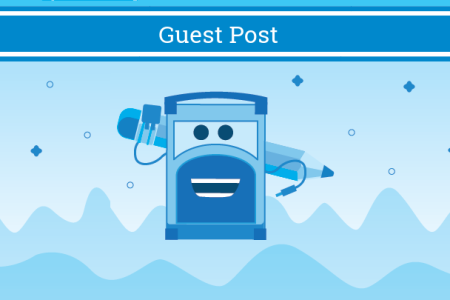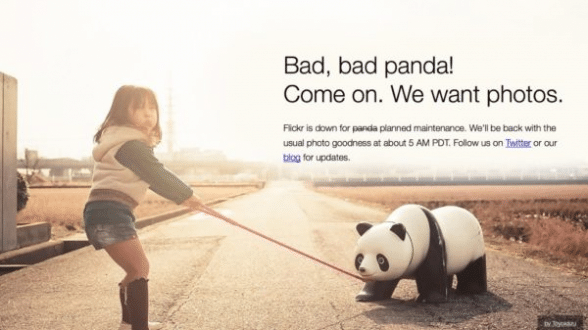A study by Deloitte found that while 80% of survey respondents said they provided superior customer service, customers perceived only 8% of them actually providing superior service. What’s going on that’s causing such a huge disparity between what companies believe and how customers perceive?
According to Deloitte, the answer is a lack of listening to customers. In the age of social media and online customer support, the problem has grown, but a huge opportunity exists to fix it.
Why you should care about social listening
Social listening is the process of actively monitoring mentions of your company, brand, industry, or products online. This applies to mentions through all digital avenues, not just social media.
Your customers are constantly giving valuable insight that can help you improve their experience.
By listening to what’s being said, keeping up with the conversation with social listening tools, and tracking important customer metrics, you can develop a more complete customer service experience. Social listening leads you to a wealth of data directly from the customers themselves.
1. Choose your targets
Monitor where it matters to you. Look for the platforms that have the largest chunks of your customers and start there. If you have limited resources, stick to only a few platforms and expand only when possible. You’ll be able to see the benefits of even a limited social listening campaign.
2. Set yourself up for success
It would be difficult to manually track every relevant keyword or tag. You can get a tool for that. The right tool will help know you when and where conversations are happening. Set up a tool to monitor important keywords and phrases while also sending you alerts when something is happening that’s worth noting or responding to.
3. Become more engaging
A survey from Clutch revealed some telling data about customer expectations:
- 76% of people expect brands to respond to social media comments
- Out of that 76 %, 83% expect that response to come with 24 hours or less
- Within the millennial generation, 80% expect responses on social media
- Out of those millennials, 44% expect a response within an hour and 90% expect it within a day
- 45% of social media users view brands more favorably when they respond to negative comments
All of these findings point to the same thing: your company needs to be more engaged on social media. If you’re not responding to all comments, both positive and negative, you need to be. Social media has revolutionized customer service, creating a bridge between brands and customers across the board. Take advantage of this and actively engage with your customers whenever possible.
There are many other customer service statistics out there that prove being engaging is great for building relationships and hearing what customers think.
4. Address individuals, don’t generalize
While responding to customers is great, you need to focus on doing it right. For social listening to have any impact on your customer service, you have to listen and respond to individuals rather than leaning towards generalized responses.
While it’s easier to make a response template for both positive and negative comments, this gives off a stale, robotic feel to customers. Be creative and respond to customers individually. When you’re addressing a widespread problem from your account you can speak generally, but don’t do that if you’re responding to an individual’s problem.
Make sure you’re responding to customer service requests 100% of the time. If you can’t solve their problem right away, let them know you hear them and will solve it soon.
5. Always address complaints
It’s worth mentioning one of those Clutch findings again:
45% of social media users view brands more favorably when they respond to negative comments.
If people are using your social accounts for customer service, which includes negative feedback, you need to treat your accounts like customer service entryways. Plan for appropriate ways to respond to negative comments. Prepare your social media management team to take care of these issues when they come up.
Imagine the damage control you could do on negative reviews! You don’t always have to offer compensation, but by helping people out individually you can make the situation better. Customer service oriented companies like Amazon could improve their service even more through social listening and responding to negative reviews, even from third-party review services.
Responding to negative comments will not only help the individual with the complaint, but it will also create a better perception of your company overall.
6. Learn to be proactive
Some customers will be just mentioning your products in passing, or something relevant to your industry, and they may not be expecting a response. You can build customer loyalty and create stronger bonds to your company by proactively responding to even those customers.
Another way to be proactive is to constantly communicate with your customers when you’re facing a problem or you’re going to be taking an action that will affect them in some way. For example, if you have to do site maintenance and your site will be down for a few hours, make it known.
This way you get ahead of customer complaints and questions and offer an easy way for them to get information.
7. Collect data & analyze trends
Social listening is most effective when you’re also recording. After a few months or the first year of social listening, you should have a sizeable collection of data to analyze and learn from. Here are some questions you can try to answer with your data:
- What problems do a lot of customers mention?
- When do most people engage with our brand? (time of day, days of the week, etc.)
- How quickly are we responding?
- What’s the preferred method of communication from customers? (DMs, tweets, comments, etc.)
- How are people responding to the new social media strategy?
- What are some of the trends showing up in product use and desired features?
Use your insights to improve your products, communication strategy, and customer service strategy.
Start now
If you’re already on social media, there’s no reason to delay. Start social listening now and get ahead of your competition. There’s a good chance your competitors are part of that 80% of companies that think they’re providing superior, even if they’re actually one of the 92% that isn’t.

Christine James believes that every customer has a voice. She is the Community Manager at HissingKitty.com (a customer complaints website) and loves talking to customers on social media about their challenges with Fortune 500 companies. Her work has been published on Huffington Post, Inc., SocialMediaToday, and Thought Catalog. Follow her on Twitter @hissingkittycom.







